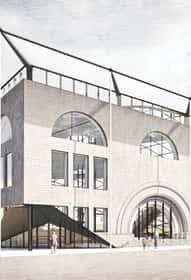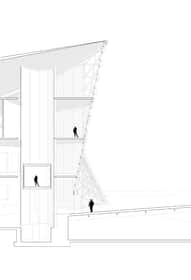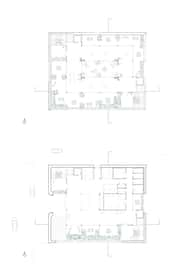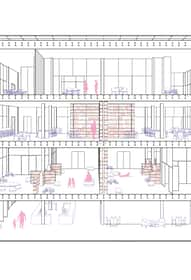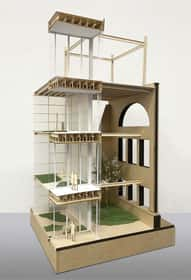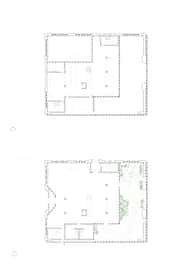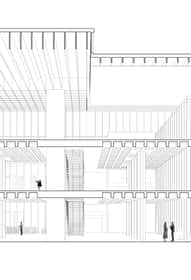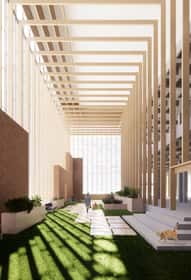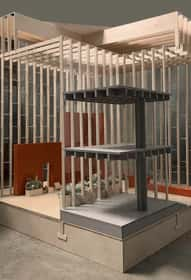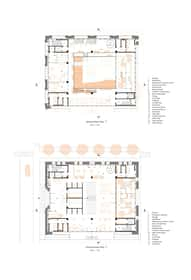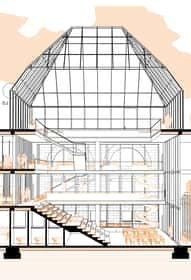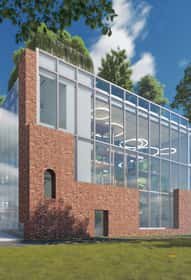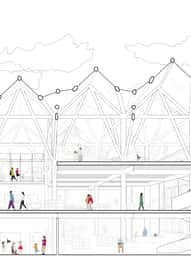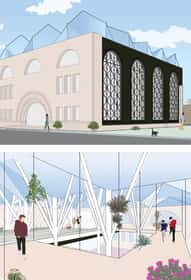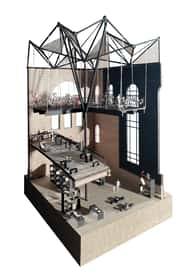B.ARCH Third Year Studio Fall
HomeProfessors:
- Trent Fredrickson
Students:
- Jiachen Wang •
- Noah Johnson
ARCH 305 ARCHITECTURE STUDIO V
Section 1 Fredrickson • Section 2 Roark • Section 3 Yu • Section 4 Alijabi • Section 5 Xu • Section 6 Wetzel
Fieldhouse without a Field
Chicago is the birthplace of the field house, an indoor facility that extends the seasonal use of public parks. The fieldhouse was originally conceived of as a community center that supported the health and well-being of city dwellers. Early public parks were associated with respite from urban density, filth and pollution by providing green space and healthy recreational reprieve. The Chicago Park District currently operates over 1200 parks and 240 field houses all free and open to the public. The park district reinforces a lively mix of community interests from play and wellness to arts, culture and public engagement. It serves citizens of all ages and abilities by providing space for inclusion and organized seasonal programming.
While 99.6% of city residents live within ½ mile of a public park, not all parks are equal. The fieldhouse without a field looks at the possibility of considering fieldhouses that are located throughout the city as a means of extending the reach of the park districts programming without necessarily being connected to a green space. These fieldhouses serve as community centers of recreation and well-being by providing spaces dedicated to sports, play and wellness and/or arts and culture. A variety of focuses and urban contextsl provide a modicum of specialized facilities directed toward a community of users that may be neighborhood or city-wide. These fieldhouses without fields serve as new anchors in communities that may be lacking in development opportunities.
1
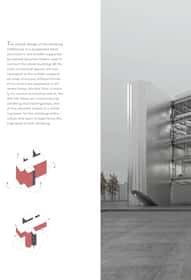
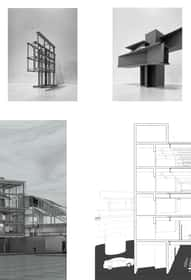
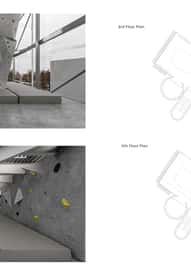
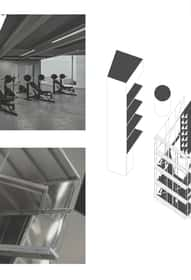
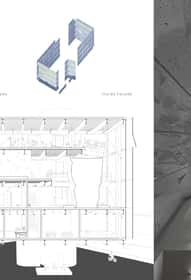
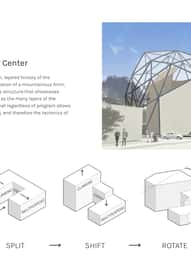
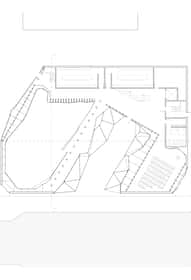
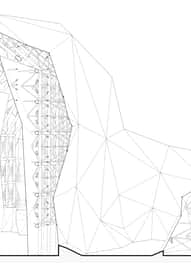
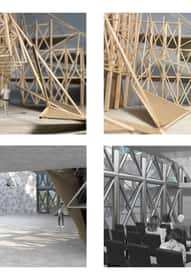
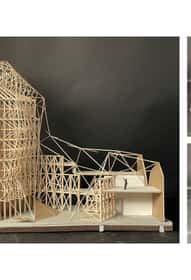
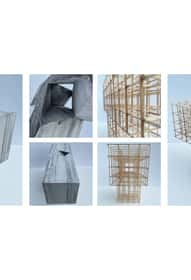
Professors:
- Ryan Roark
Students:
- Zoe Koehl •
- Nicolas Ledonne •
- Naqvee Wahab •
- Kylee Hennes •
- Julianna Roberts •
- Gemma Brizzolara
ARCH 305 ARCHITECTURE STUDIO V
Section 1 Fredrickson • Section 2 Roark • Section 3 Yu • Section 4 Alijabi • Section 5 Xu • Section 6 Wetzel
Fieldhouse without a Field
Chicago is the birthplace of the field house, an indoor facility that extends the seasonal use of public parks. The fieldhouse was originally conceived of as a community center that supported the health and well-being of city dwellers. Early public parks were associated with respite from urban density, filth and pollution by providing green space and healthy recreational reprieve. The Chicago Park District currently operates over 1200 parks and 240 field houses all free and open to the public. The park district reinforces a lively mix of community interests from play and wellness to arts, culture and public engagement. It serves citizens of all ages and abilities by providing space for inclusion and organized seasonal programming.
While 99.6% of city residents live within ½ mile of a public park, not all parks are equal. The fieldhouse without a field looks at the possibility of considering fieldhouses that are located throughout the city as a means of extending the reach of the park districts programming without necessarily being connected to a green space. These fieldhouses serve as community centers of recreation and well-being by providing spaces dedicated to sports, play and wellness and/or arts and culture. A variety of focuses and urban contextsl provide a modicum of specialized facilities directed toward a community of users that may be neighborhood or city-wide. These fieldhouses without fields serve as new anchors in communities that may be lacking in development opportunities.
2
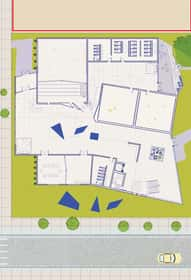
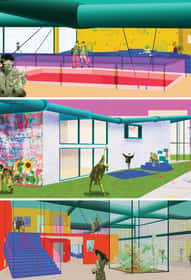
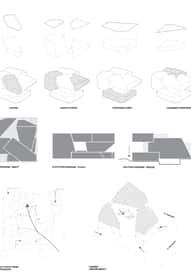
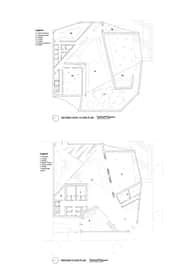
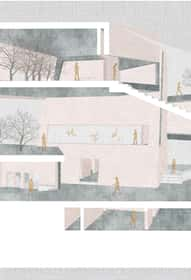
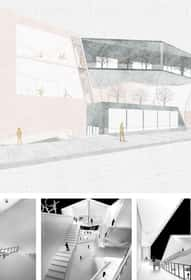
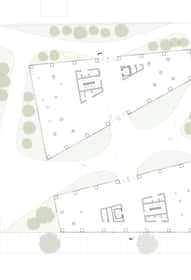
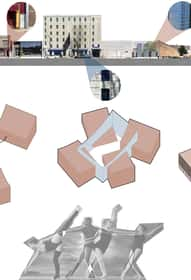
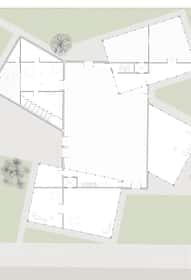
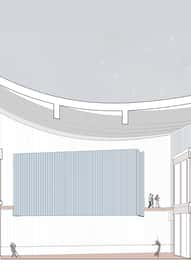
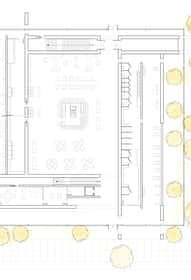
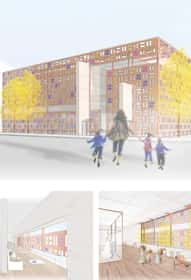
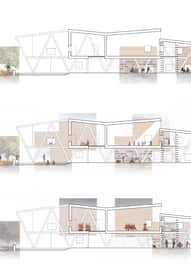
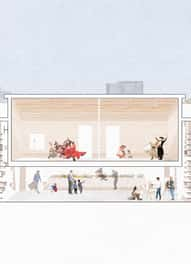
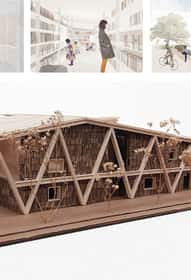
Professors:
- Camille Yu
Students:
- Karina Welch
ARCH 305 ARCHITECTURE STUDIO V
Section 1 Fredrickson • Section 2 Roark • Section 3 Yu • Section 4 Alijabi • Section 5 Xu • Section 6 Wetzel
Fieldhouse without a Field
Chicago is the birthplace of the field house, an indoor facility that extends the seasonal use of public parks. The fieldhouse was originally conceived of as a community center that supported the health and well-being of city dwellers. Early public parks were associated with respite from urban density, filth and pollution by providing green space and healthy recreational reprieve. The Chicago Park District currently operates over 1200 parks and 240 field houses all free and open to the public. The park district reinforces a lively mix of community interests from play and wellness to arts, culture and public engagement. It serves citizens of all ages and abilities by providing space for inclusion and organized seasonal programming.
While 99.6% of city residents live within ½ mile of a public park, not all parks are equal. The fieldhouse without a field looks at the possibility of considering fieldhouses that are located throughout the city as a means of extending the reach of the park districts programming without necessarily being connected to a green space. These fieldhouses serve as community centers of recreation and well-being by providing spaces dedicated to sports, play and wellness and/or arts and culture. A variety of focuses and urban contextsl provide a modicum of specialized facilities directed toward a community of users that may be neighborhood or city-wide. These fieldhouses without fields serve as new anchors in communities that may be lacking in development opportunities.
3
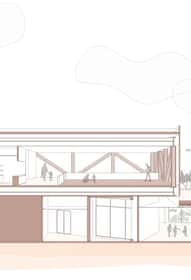
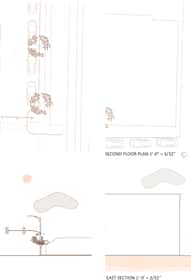
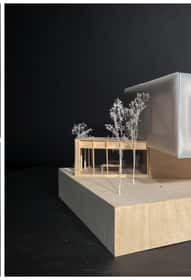
Professors:
- Noora Alijabi
Students:
- Jlees Ahmed
ARCH 305 ARCHITECTURE STUDIO V
Section 1 Fredrickson • Section 2 Roark • Section 3 Yu • Section 4 Alijabi • Section 5 Xu • Section 6 Wetzel
Fieldhouse without a Field
Chicago is the birthplace of the field house, an indoor facility that extends the seasonal use of public parks. The fieldhouse was originally conceived of as a community center that supported the health and well-being of city dwellers. Early public parks were associated with respite from urban density, filth and pollution by providing green space and healthy recreational reprieve. The Chicago Park District currently operates over 1200 parks and 240 field houses all free and open to the public. The park district reinforces a lively mix of community interests from play and wellness to arts, culture and public engagement. It serves citizens of all ages and abilities by providing space for inclusion and organized seasonal programming.
While 99.6% of city residents live within ½ mile of a public park, not all parks are equal. The fieldhouse without a field looks at the possibility of considering fieldhouses that are located throughout the city as a means of extending the reach of the park districts programming without necessarily being connected to a green space. These fieldhouses serve as community centers of recreation and well-being by providing spaces dedicated to sports, play and wellness and/or arts and culture. A variety of focuses and urban contextsl provide a modicum of specialized facilities directed toward a community of users that may be neighborhood or city-wide. These fieldhouses without fields serve as new anchors in communities that may be lacking in development opportunities.
4
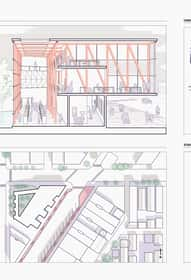
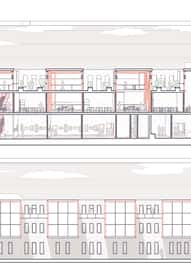
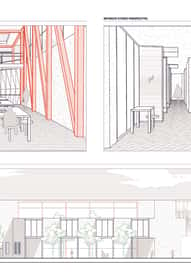
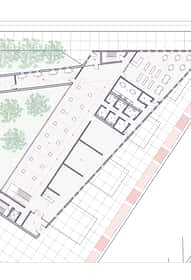
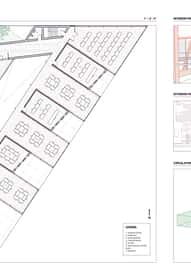
Professors:
- Sharon Xu
Students:
- Suriana Mozo •
- Leo Liu •
- Grantham Bergen
ARCH 305 ARCHITECTURE STUDIO V
Section 1 Fredrickson • Section 2 Roark • Section 3 Yu • Section 4 Alijabi • Section 5 Xu • Section 6 Wetzel
Fieldhouse without a Field
Chicago is the birthplace of the field house, an indoor facility that extends the seasonal use of public parks. The fieldhouse was originally conceived of as a community center that supported the health and well-being of city dwellers. Early public parks were associated with respite from urban density, filth and pollution by providing green space and healthy recreational reprieve. The Chicago Park District currently operates over 1200 parks and 240 field houses all free and open to the public. The park district reinforces a lively mix of community interests from play and wellness to arts, culture and public engagement. It serves citizens of all ages and abilities by providing space for inclusion and organized seasonal programming.
While 99.6% of city residents live within ½ mile of a public park, not all parks are equal. The fieldhouse without a field looks at the possibility of considering fieldhouses that are located throughout the city as a means of extending the reach of the park districts programming without necessarily being connected to a green space. These fieldhouses serve as community centers of recreation and well-being by providing spaces dedicated to sports, play and wellness and/or arts and culture. A variety of focuses and urban contextsl provide a modicum of specialized facilities directed toward a community of users that may be neighborhood or city-wide. These fieldhouses without fields serve as new anchors in communities that may be lacking in development opportunities.
5
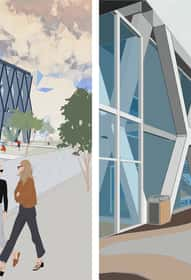
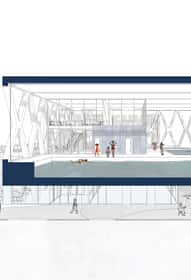
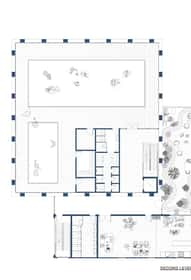
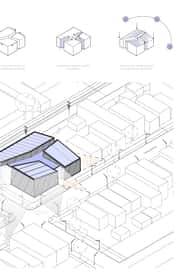
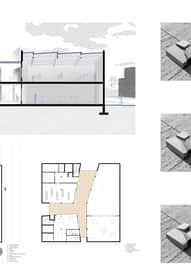
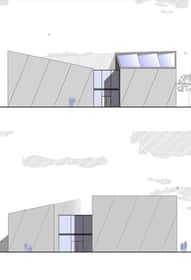
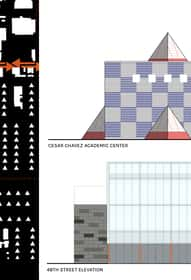
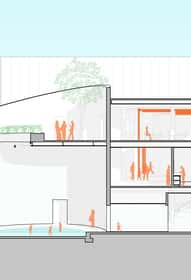
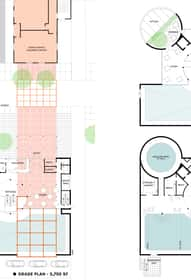
Professors:
- Catherine Wetzel
Students:
- Sakshi Thakkar
ARCH 305 ARCHITECTURE STUDIO V
Section 1 Fredrickson • Section 2 Roark • Section 3 Yu • Section 4 Alijabi • Section 5 Xu • Section 6 Wetzel
Fieldhouse without a Field
Chicago is the birthplace of the field house, an indoor facility that extends the seasonal use of public parks. The fieldhouse was originally conceived of as a community center that supported the health and well-being of city dwellers. Early public parks were associated with respite from urban density, filth and pollution by providing green space and healthy recreational reprieve. The Chicago Park District currently operates over 1200 parks and 240 field houses all free and open to the public. The park district reinforces a lively mix of community interests from play and wellness to arts, culture and public engagement. It serves citizens of all ages and abilities by providing space for inclusion and organized seasonal programming.
While 99.6% of city residents live within ½ mile of a public park, not all parks are equal. The fieldhouse without a field looks at the possibility of considering fieldhouses that are located throughout the city as a means of extending the reach of the park districts programming without necessarily being connected to a green space. These fieldhouses serve as community centers of recreation and well-being by providing spaces dedicated to sports, play and wellness and/or arts and culture. A variety of focuses and urban contextsl provide a modicum of specialized facilities directed toward a community of users that may be neighborhood or city-wide. These fieldhouses without fields serve as new anchors in communities that may be lacking in development opportunities.
6
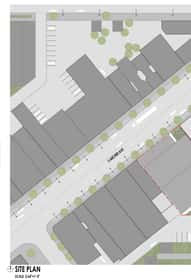
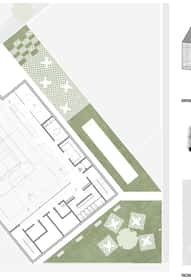
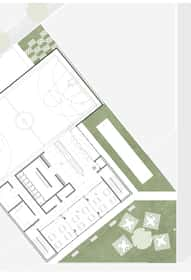
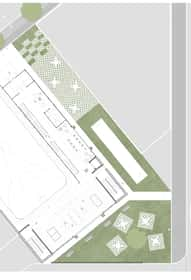
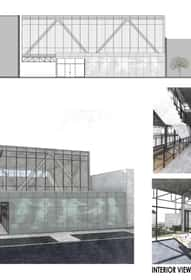
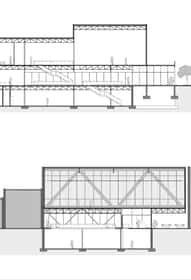
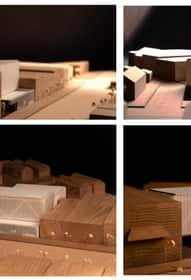
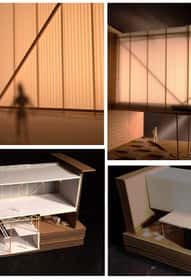
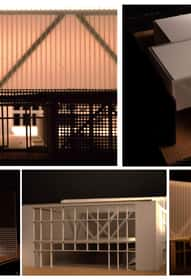
B.ARCH Third Year Studio Spring
HomeProfessors:
- Camille Yu
Students:
- Zoe Koehl •
- Noah Johnson •
- Jlees Ahmed
ARCH 306 ARCHITECTURE STUDIO
Section 1 Yu • Section 2 Wetzel • Section 3 Xu • Section 4 Fredrickson • Section 5 Roark
On three adaptive reuse sites on the southside of Chicago, concern for cultural, environmental and economic responsiveness frames the design of a Chicago branch library in Woodlawn, Bronzeville and Pullman.
The projects are conceived within the public library system as a place of community lending. As a repository of resources, the Chicago Public Library’s mission statement projects a connection to lifelong learning, information, ideas and knowledge. Through the years, the public library has included programming and other resources as a method of reaching beyond books and literacy to broaden their mission and address local initiatives.
Exploring the concept of shared economies and shared ecologies at the scale of the community and the city, the projects expand the offerings of the public library to include a broader base program element that recognizes the library as a community center. The integrated program elements vary by section and include music recording space, seed libraries, community kitchens, food pantries, winter gardens and social service spaces. These added program elements help to expand the agency of the contemporary library as a place of community identity and collective engagement.
1
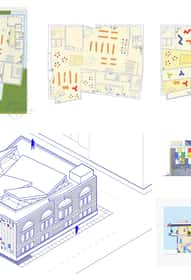
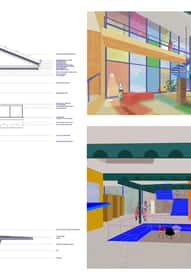
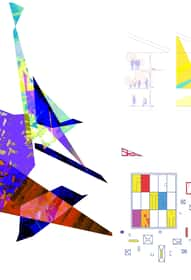
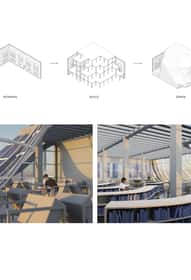
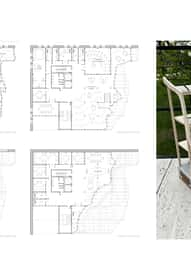
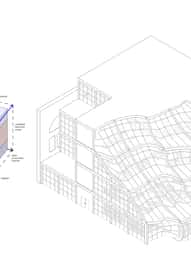
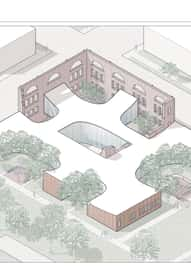
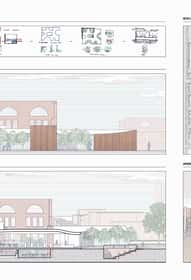
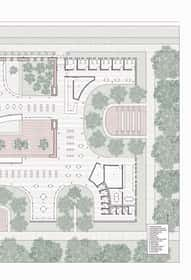
Professors:
- Catherine Wetzel
Students:
- Adam Berrahou •
- Karina Welch
ARCH 306 ARCHITECTURE STUDIO VI
Section 1 Yu • Section 2 Wetzel • Section 3 Xu • Section 4 Fredrickson • Section 5 Roark
On three adaptive reuse sites on the southside of Chicago, concern for cultural, environmental and economic responsiveness frames the design of a Chicago branch library in Woodlawn, Bronzeville and Pullman.
The projects are conceived within the public library system as a place of community lending. As a repository of resources, the Chicago Public Library’s mission statement projects a connection to lifelong learning, information, ideas and knowledge. Through the years, the public library has included programming and other resources as a method of reaching beyond books and literacy to broaden their mission and address local initiatives.
Exploring the concept of shared economies and shared ecologies at the scale of the community and the city, the projects expand the offerings of the public library to include a broader base program element that recognizes the library as a community center. The integrated program elements vary by section and include music recording space, seed libraries, community kitchens, food pantries, winter gardens and social service spaces. These added program elements help to expand the agency of the contemporary library as a place of community identity and collective engagement.
2
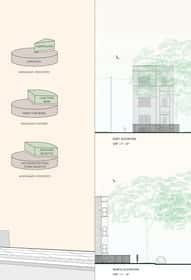
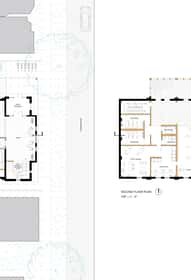
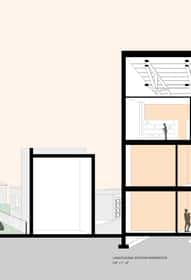
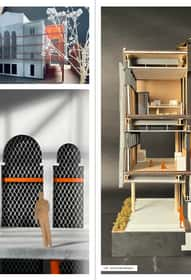
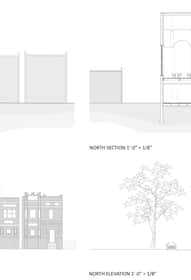
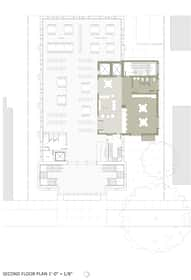
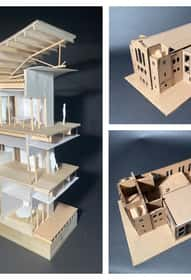
Professors:
- Sharon Xu
Students:
- Aya Abdallah •
- Mariannys Lopez •
- Nadeen El Baw •
- Tori Charmoli
ARCH 306 ARCHITECTURE STUDIO VI
Section 1 Yu • Section 2 Wetzel • Section 3 Xu • Section 4 Fredrickson • Section 5 Roark
On three adaptive reuse sites on the southside of Chicago, concern for cultural, environmental and economic responsiveness frames the design of a Chicago branch library in Woodlawn, Bronzeville and Pullman.
The projects are conceived within the public library system as a place of community lending. As a repository of resources, the Chicago Public Library’s mission statement projects a connection to lifelong learning, information, ideas and knowledge. Through the years, the public library has included programming and other resources as a method of reaching beyond books and literacy to broaden their mission and address local initiatives.
Exploring the concept of shared economies and shared ecologies at the scale of the community and the city, the projects expand the offerings of the public library to include a broader base program element that recognizes the library as a community center. The integrated program elements vary by section and include music recording space, seed libraries, community kitchens, food pantries, winter gardens and social service spaces. These added program elements help to expand the agency of the contemporary library as a place of community identity and collective engagement.
3
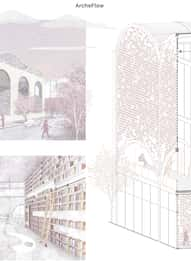
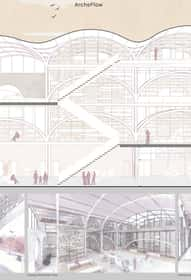
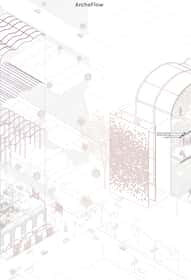
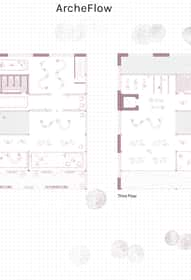
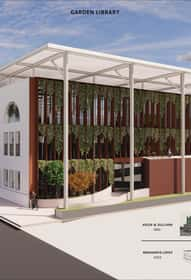
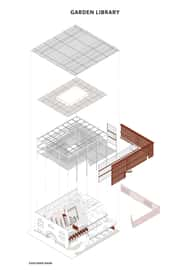
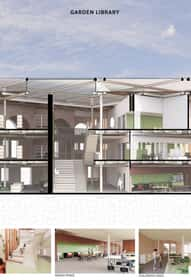
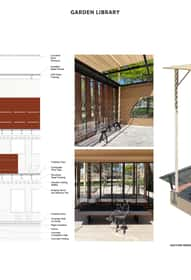
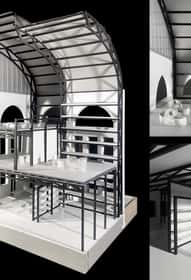
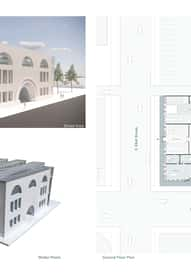
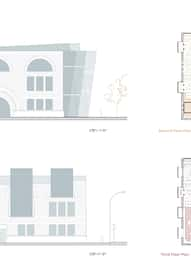
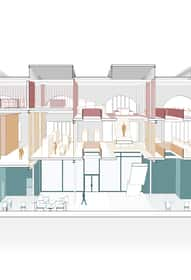
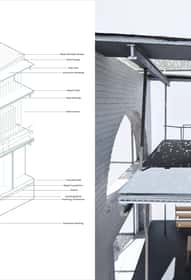
Professors:
- Tent Fredrickson
Students:
- Nicholas Ramirez •
- Gemma Brizzolara •
- Nick Ledonne
ARCH 306 ARCHITECTURE STUDIO VI
Section 1 Yu • Section 2 Wetzel • Section 3 Xu • Section 4 Fredrickson • Section 5 Roark
On three adaptive reuse sites on the southside of Chicago, concern for cultural, environmental and economic responsiveness frames the design of a Chicago branch library in Woodlawn, Bronzeville and Pullman.
The projects are conceived within the public library system as a place of community lending. As a repository of resources, the Chicago Public Library’s mission statement projects a connection to lifelong learning, information, ideas and knowledge. Through the years, the public library has included programming and other resources as a method of reaching beyond books and literacy to broaden their mission and address local initiatives.
Exploring the concept of shared economies and shared ecologies at the scale of the community and the city, the projects expand the offerings of the public library to include a broader base program element that recognizes the library as a community center. The integrated program elements vary by section and include music recording space, seed libraries, community kitchens, food pantries, winter gardens and social service spaces. These added program elements help to expand the agency of the contemporary library as a place of community identity and collective engagement.
4
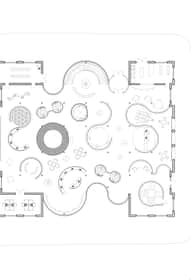
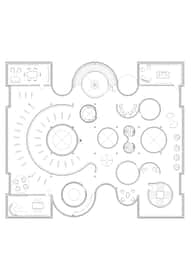
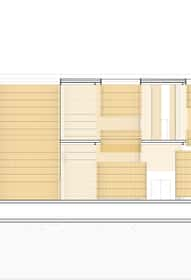
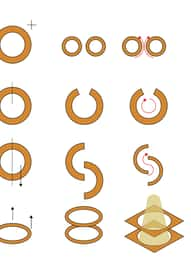
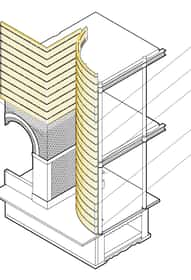
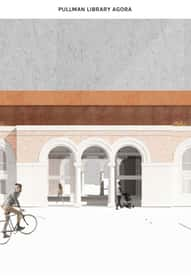
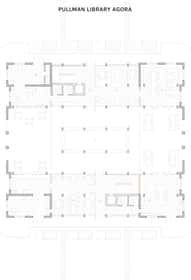
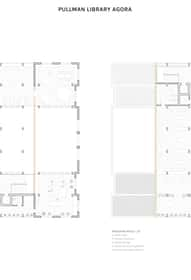
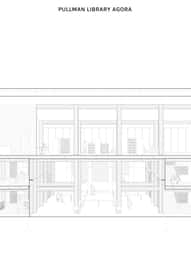

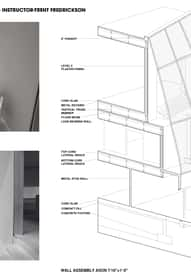
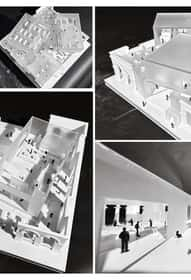
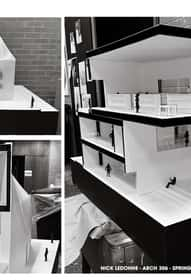
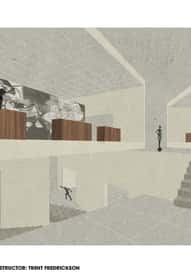
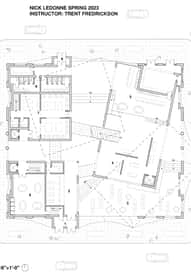
Professors:
- Ryan Roark
Students:
- Michael Graham •
- Jillian Oligschlaeger •
- Ethan Phillips •
- Delisha Mehta •
- Breanne Long
ARCH 306 ARCHITECTURE STUDIO VI
Section 1 Yu • Section 2 Wetzel • Section 3 Xu • Section 4 Fredrickson • Section 5 Roark
On three adaptive reuse sites on the southside of Chicago, concern for cultural, environmental and economic responsiveness frames the design of a Chicago branch library in Woodlawn, Bronzeville and Pullman.
The projects are conceived within the public library system as a place of community lending. As a repository of resources, the Chicago Public Library’s mission statement projects a connection to lifelong learning, information, ideas and knowledge. Through the years, the public library has included programming and other resources as a method of reaching beyond books and literacy to broaden their mission and address local initiatives.
Exploring the concept of shared economies and shared ecologies at the scale of the community and the city, the projects expand the offerings of the public library to include a broader base program element that recognizes the library as a community center. The integrated program elements vary by section and include music recording space, seed libraries, community kitchens, food pantries, winter gardens and social service spaces. These added program elements help to expand the agency of the contemporary library as a place of community identity and collective engagement.
5
